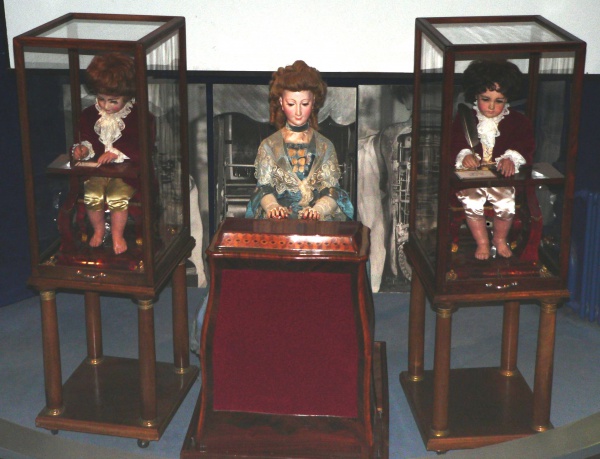Facts About Jaquet-Droz automata
The Jaquet-Droz automata are a captivating trio of mechanical dolls created between 1768 and 1774 by the ingenious Pierre Jaquet-Droz, his son Henri-Louis Jaquet-Droz, and their collaborator Jean-Frédéric Leschot. These extraordinary creations, known as the Musician, the Draughtsman, and the Writer, were designed to serve both as advertisements and entertainment pieces, captivating European nobility and boosting sales of Jaquet-Droz watches. Today, these automata remain in working condition and are proudly displayed at the Musée d'Art et d'Histoire in Neuchâtel, Switzerland. They are often regarded as early forerunners of modern computers due to their intricate mechanisms.
Let's delve into each of these astonishing dolls:
1. The Musician: This automaton portrays a female organ player who performs on a custom-built instrument. What makes her so mesmerizing is her lifelike movements—she presses the keys with her fingers, appears to breathe, and follows her fingers with her head and eyes.
2. The Draughtsman: Modeled after a young child, this automaton can draw four different images using a sophisticated system of cams that encode hand movements in two dimensions. The drawings include a portrait of Louis XV, a royal couple, a dog with the words "Mon toutou" beside it, and a scene of Cupid driving a chariot pulled by a butterfly. Enhancing the realism, the draughtsman shifts in his chair and blows on the pencil intermittently.
3. The Writer: The most complex of the trio, this automaton can write custom text up to 40 characters long. It uses a system similar to the draughtsman's, where the text is selected letter by letter from a coded wheel. The writer uses a quill to write, periodically dipping it in ink and shaking its wrist to prevent spills. Its eyes follow the text, and its head moves when taking ink, adding a touch of realism to the process.
In 1906, the History and Archaeology Society of Neuchâtel acquired these automata for 75,000 gold francs and generously donated them to the museum. The Jaquet-Droz automata are a testament to the intricate craftsmanship and mechanical ingenuity of their creators. They represent a significant historical and technological achievement in the world of automata, captivating audiences with their precision and lifelike movements even centuries later.

 Italy
Italy